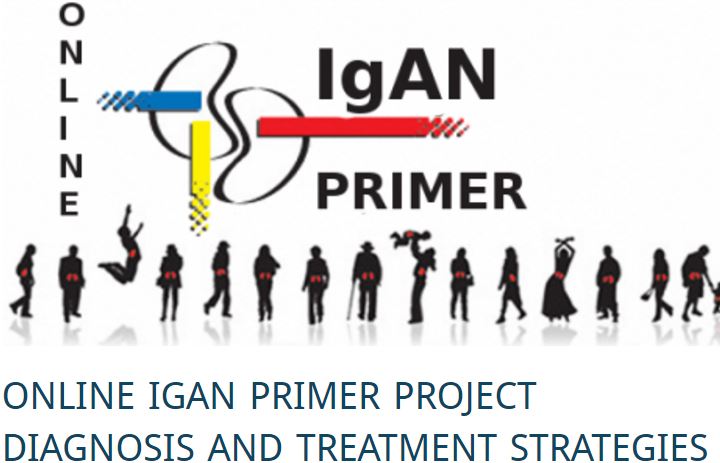
Corticosteroid Treatment For IgAN Results In Unacceptable Harm
Large multi-center study of classical steroid treatment for IgAN patients halted early
Immediate harm proved to outweigh potential benefits
Corticosteroid treatment in IgA nephropathy patients, an autoimmune kidney disease revealed an increased risk for immediate dangerous side effects, according to researchers reporting in the top medical journal JAMA.
Secured from public view behind an exorbitantly priced paywall this vital medical study result is important for all those in the world of kidney disease, patients and doctors.
The new study –Therapeutic Evaluation of Steroids in IgA Nephropathy Global, aka ‘TESTING’ — was halted after 2 years when an interim analysis revealed serious adverse events had occurred in 20 patients in the treatment group (14.7%) versus four in the placebo group (3.2%) for a relative risk of 4.63 (95% CI 1.63-13.2, P<0.001). The risk difference was 11.5% (95% CI 4.8%-18.2%), reported Hong Zhang, PhD, of Peking University in Beijing, and colleagues.
Adverse events showed up early, during the first 3 months of treatment, and they were primarily seen as an excess of serious infections, including two fatal infections, among 11 patients (8.1%) in the treatment group versus none in the placebo group (risk difference 8.1%, 95% CI 3.5%-13.9%, P<0.001), Zhang’s group wrote in JAMA.
Note: One of the most well known side effects of what many doctors call ‘sledge-hammer’ corticosteroid treatment is just this same dangerous infection effect. This 2016 NEJM journal study is by far the largest study to evaluate the correlation between corticosteroid treatment and infection. Considering that the authors included only infections identified by specific diagnostic codes and excluded those with less precise codes, the true risk for infection associated with corticosteroid treatment may be even higher.
There are alternatives to use of this popular, amongst doctors that is, sledge-hammer therapy to treating IgA Nephropathy.
On this blog you will find more about understanding and treating IgAN and an opportunity to participate in a crowd sourced project to create a common knowledge base. Just click on the IgAN Primer graphic to learn and participate.
The study also found evidence of benefit in the treatment group, where eight patients (5.9%) experiencing a worsening of kidney function, death, or progression to end-stage renal disease (ESRD), compared to 20 patients (15.9%) in the placebo group (hazard ratio 0.37 95% CI 0.17-0.85, risk difference 10%, 95% CI 2.5%-17.9%, P=0.02).
“This study assessed a typical full-dose corticosteroid treatment regimen in patients with IgA nephropathy at high risk. While proteinuria and eGFR [estimated glomerular filtration rate] levels were improved, and suggestions of potential benefit for the primary outcome were observed, there were too few qualified ‘primary outcomes’ to make definitive conclusions about treatment efficacy from this trial.
“The excess of serious infections observed in this study has implications for clinical decision making and treatment guidelines for the use of corticosteroids in IgA nephropathy,” say the authors. “Future studies might also consider the use of prophylactic antibiotic therapy, which has not been used in any of the completed studies and is not recommended in clinical practice guidelines.”
Study Details
With standard or little treatments about 30% of all patients with IgA nephropathy will eventually progress to ESRD. IgAN is the most prevalent primary glomerular kidney disease and is second only to closely related diabetic nephropathy in overall kidney disease. Current global guidelines suggest a 6-month course of corticosteroids for individuals with urinary protein excretion persistently above 1 g/d and an eGFR greater than 50 mL/min/1.73m2 after at least 3 months of appropriate supportive care.
It is widely acknowledged that this recommendation is based on low-quality evidence. That evidence includes a meta-analysis of nine previous trials which suggested substantial benefit with corticosteroid therapy. But the quality of the previous studies is faulty as most trials were single-center, and adverse outcomes were poorly reported as is widely known.
In addition, results of a recent clinical trial similar to the new study, the Supportive vs Immunosuppressive Therapy for the Treatment of Progressive IgA Nephropathy (STOP-IgAN) trial, provided mostly negative results, Zhang’s group noted. The ‘STOP-IgAN’ study reported not only a relatively high risk for serious adverse events, particularly infections, in the corticosteroid group. It also found no protective effect on kidney function, despite a greater reduction in proteinuria and more complete remissions in the treatment group.
The TESTING study was planned as a multicenter, double-blind, placebo-controlled, randomized clinical trial designed to determine the efficacy and safety of oral methylprednisolone (Medrol) versus supportive therapy, aka no preventative treatment, alone in patients with biopsy-proven IgA nephropathy. Patients in the study had an eGFR of 20 to 120 mL/min/1.73m2 and at least 1 g/d of proteinuria after 3 or more months of maximum tolerated angiotensin converting enzyme (ACE) inhibitor or angiotensin II receptor blocker (ARB) therapy.
Patients were randomized to 1:1 and received 0.6 to 0.8 mg/kg/d of oral methylprednisolone or matching placebo (maximum dose, 48 mg/d) for 2 months, followed by a monthly 8 mg/d dose taper, for a total treatment duration of 6 to 8 months. The primary composite outcome was ESRD, death due to kidney failure, or a 40% decrease in eGFR. Adverse events were systematically and prospectively collected.
The investigators intended to enroll 750 patients across five countries (China, Australia, India, Canada, and Malaysia) and to follow them for a median of 5 years. However, the study was halted after a median follow-up of 2.1 years, at which time it had recruited only 262 patients from China and Australia. The vast majority of patients (96%) were Chinese.
The study had limitations, with the authors noting that,
“Although to our knowledge this is the largest trial reported to date among patients with IgA nephropathy, recruitment was stopped earlier than planned because of excess adverse events, so power was less than predicted, and both risks and benefits might be overestimated as a result.” In addition, since most participants were Chinese, ethnicity-based treatment responses could not be assessed, they stated.
Right Drug, Right Patient, Right Time
In an accompanying editorial, Michelle O’Shaughnessy, MB BCh, and Richard Lafayette, MD, both of Stanford University in Stanford, Calif., posited “How should nephrologists interpret these findings of an almost 3-fold lower risk for kidney failure, opposed by an almost 5-fold higher risk for adverse events?”
“From a patient care perspective, findings from the TESTING trial highlight the importance of delivering the right drug, to the right patient, at the right time,” they stated. “For an elderly patient with diabetes, osteoporosis, recurrent infections, and only mild glomerulonephritis, adverse events are likely to be of far greater concern to patient and physician than the remote possibility of ESRD. Conversely, for a young and otherwise healthy patient with multiple risk factors for rapid progression to ESRD, an increased short-term risk for (typically reversible) adverse events might be an acceptable trade-off for the potential to delay or prevent the need for dialysis or kidney transplantation.”
They also suggested that,
“Existing treatment guidelines for IgA nephropathy that encourage corticosteroid use for patients with persistent proteinuria greater than 1 g/d and preserved kidney function should likely be tempered in light of the safety signals raised by the TESTING and STOP-IgAN trials.”
and that
“extra caution should be advised, and the role of the patient in shared decision-making should be emphasized,” pointing out these issues, along with the results of the TESTING trial, will be considered for an update to the “2012 Kidney Disease: Improving Global Outcomes (KDIGO) glomerulonephritis treatment guidelines.”

Recent Comments